The next morning there’s no pool of oil under the wheel I ‘fixed’. A good sign. But it hasn’t turned yet. We’ll know a bit later…
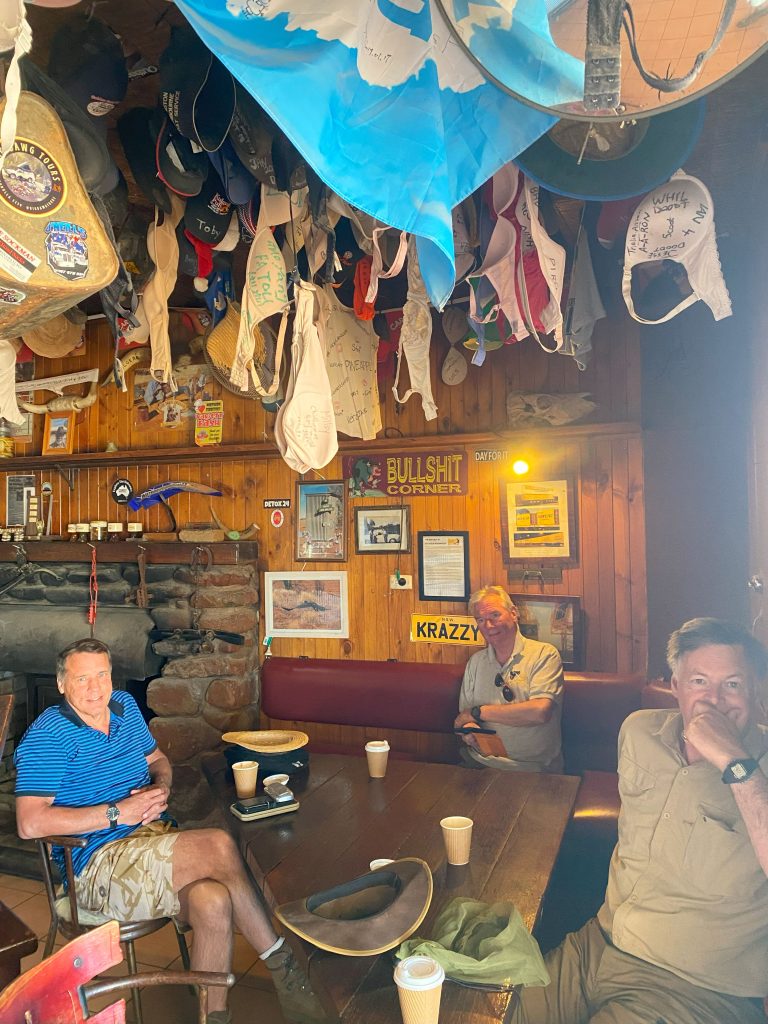
Then highway driving. The four of us are settling into two distinct crews, mirroring the characters of my parents. My mother, Joy, could laugh so hard at things we children got up to, she sometimes needed to lie down. Guy and James’ conversation fits this mold, and is something that any nine-year old would be proud of. ‘If Darth Vader and a dinosaur had a fight, who would win?’ With the engineering bent of Peter, John and I, in the senior school, discuss technology, the frequency that the microwave towers probably operate on, and comparative ways to achieve indigenous representation in government. Guy and James move on to’ If you had to live in a shop, what kind of shop would you want to live in, and why? Pie shops get a high score; kebab shops, less. Occasionally there’s a cross-pollination of ideas. ‘Could a dinosaur eat a satellite? (the junior dorm).
As we head west along the highway a pink rocky massif hoves into view. Is this it? No. It’s Mount Connor.
The junior dorm are full of plaintive complaints. ‘Are we there yet?’ ‘It’s a mount and that’s bigger than a rock. Why can’t we go there?’ ‘I need a wee’, and so on. (Actually, that last is from the senior school). We overnight in Curtin Springs, a free campsite attached to a million-acre cattle property, which does offer trips to Mount Connor, but we decline.

It also sells diesel and is clearly well known to the trucking community. An enormous turning circle becomes a rest-stop for an equally big rig. There is no stopping TASSWE (the Truck Appreciation Society of South-West England) in their enthusiasm.
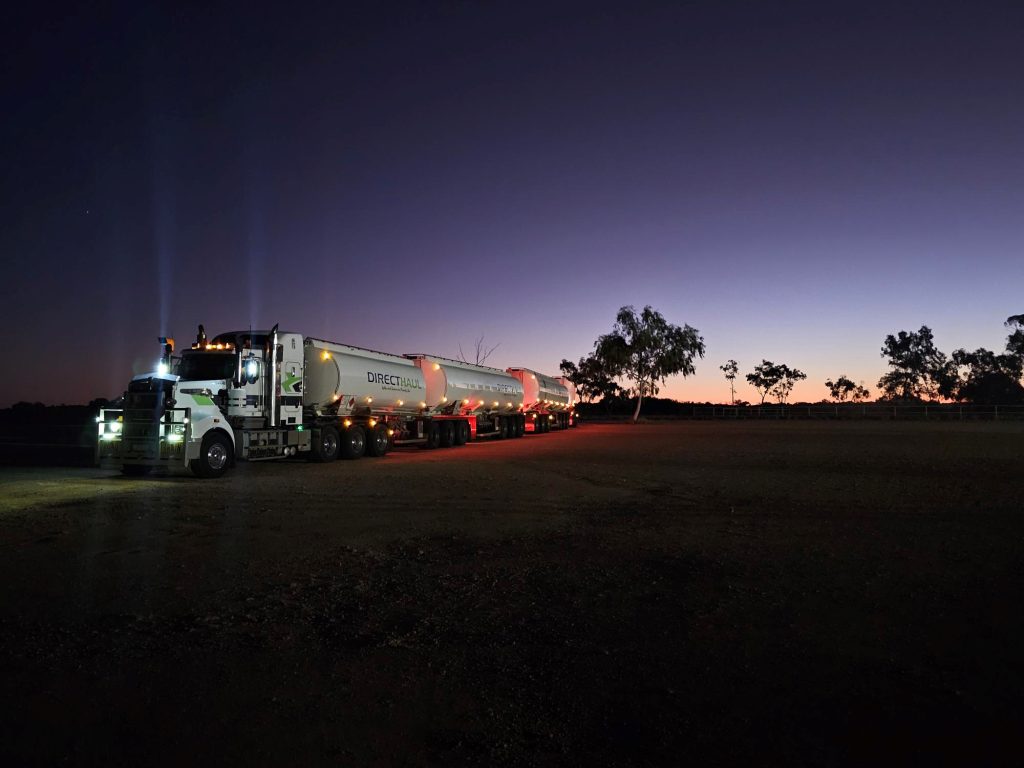

The next day our starter plan for Uluru is simple. Get there, run round it, then go to the campsite and do nothing for a bit. We’ve allowed ourselves two nights for James and I to recover. The Rock is not far. At about ten o’clock James and I wobble off into the cold sunshine and wind. Comfortingly, there are defibrillator stations at four points round the ten and a bit kilometer circuit. There are also segways, which we should have thought of and secreted somewhere. The lead of an oncoming tour calls out a warning of the ten learners behind him. Corners of the rock are a bit like the crests of the Oodnadatta Track. Anticipation of the finish round each one – only to see: more rock. Finally the carpark appears. Typically, we have parked at the very furthest point of it. But we make it and capture the day’s moral high ground.
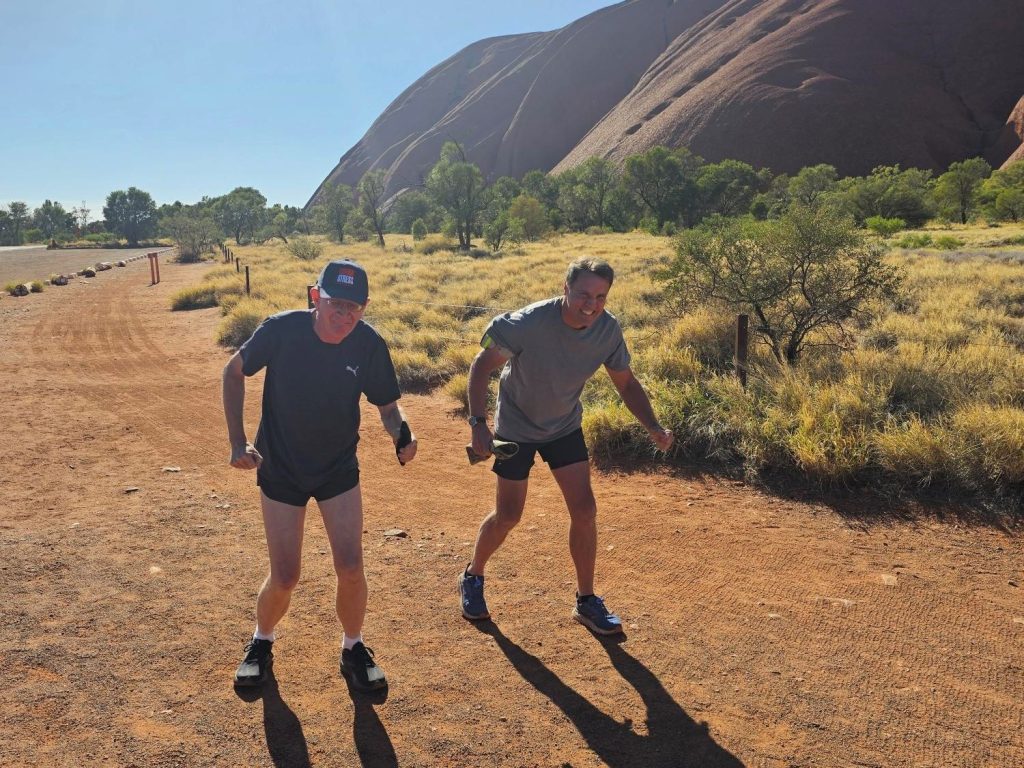
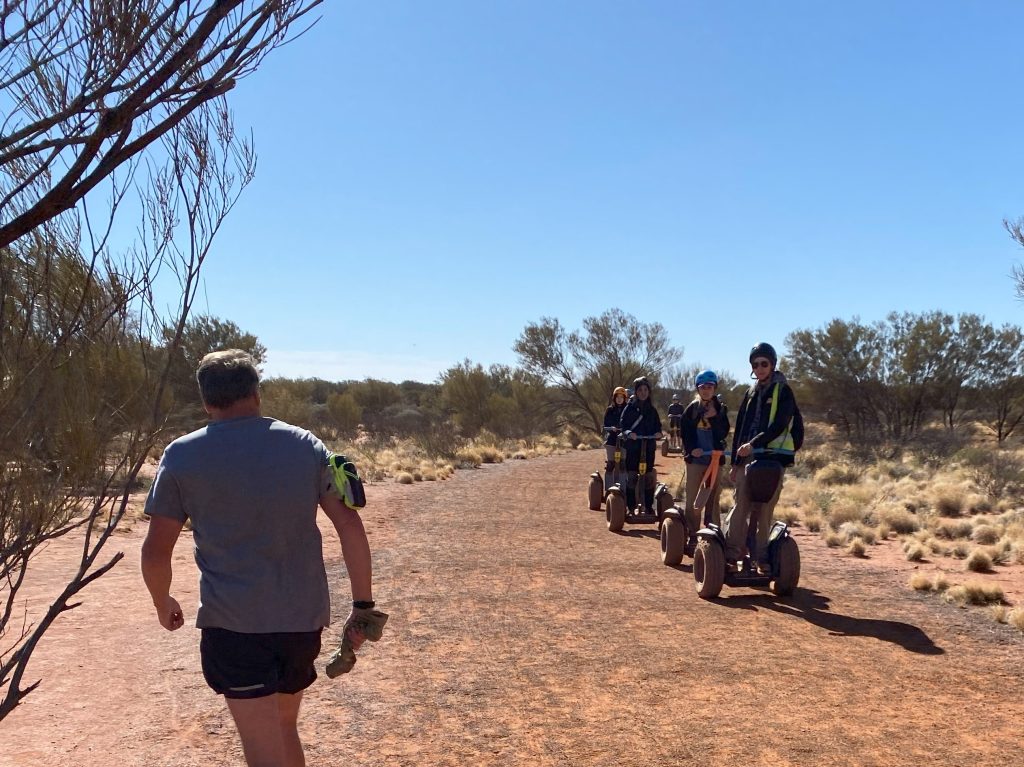

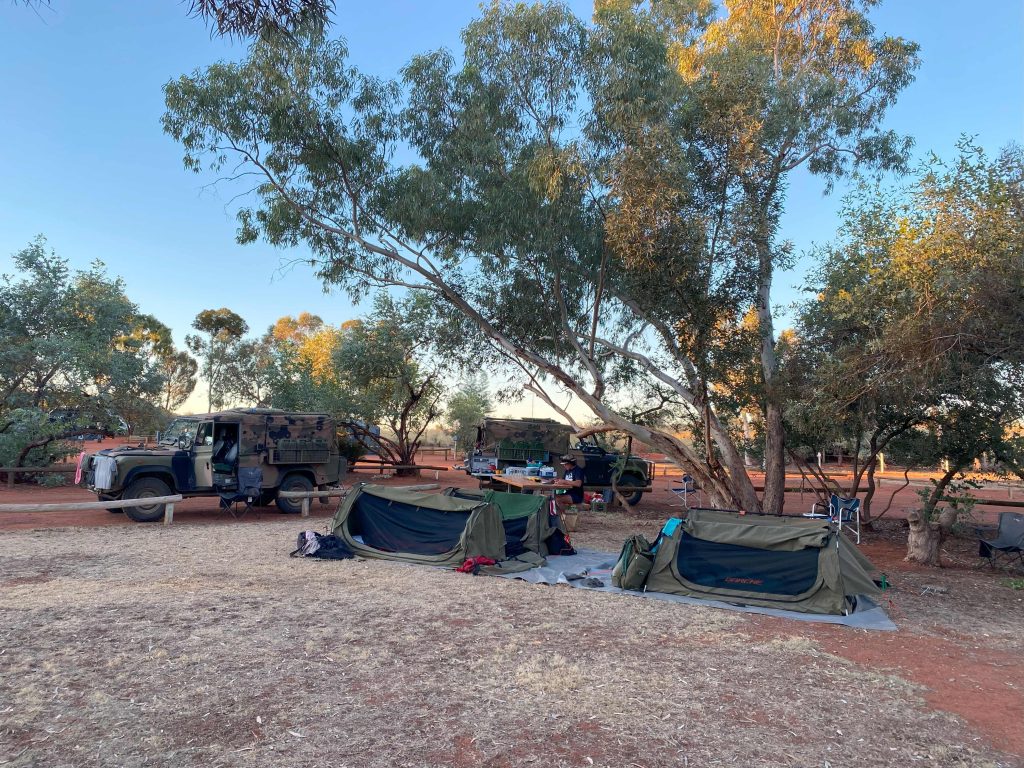
The campsite at Yulara is like camping in a suburb. We pass beautifully manicured bushes and tidy villas and streets – not for our benefit, but for the much more prestigious hotels.
A large grassy patch under some trees makes a very nice home in the campground, and a sunset viewing platform gives an easy sight of the Rock’s changing colour at dusk.
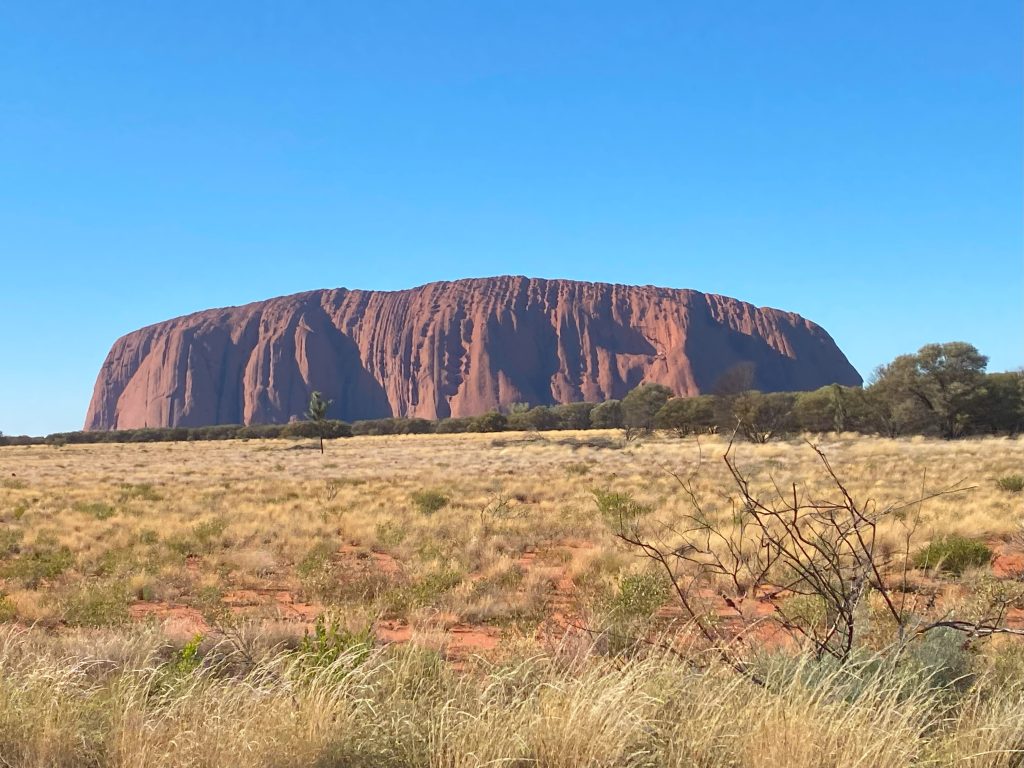

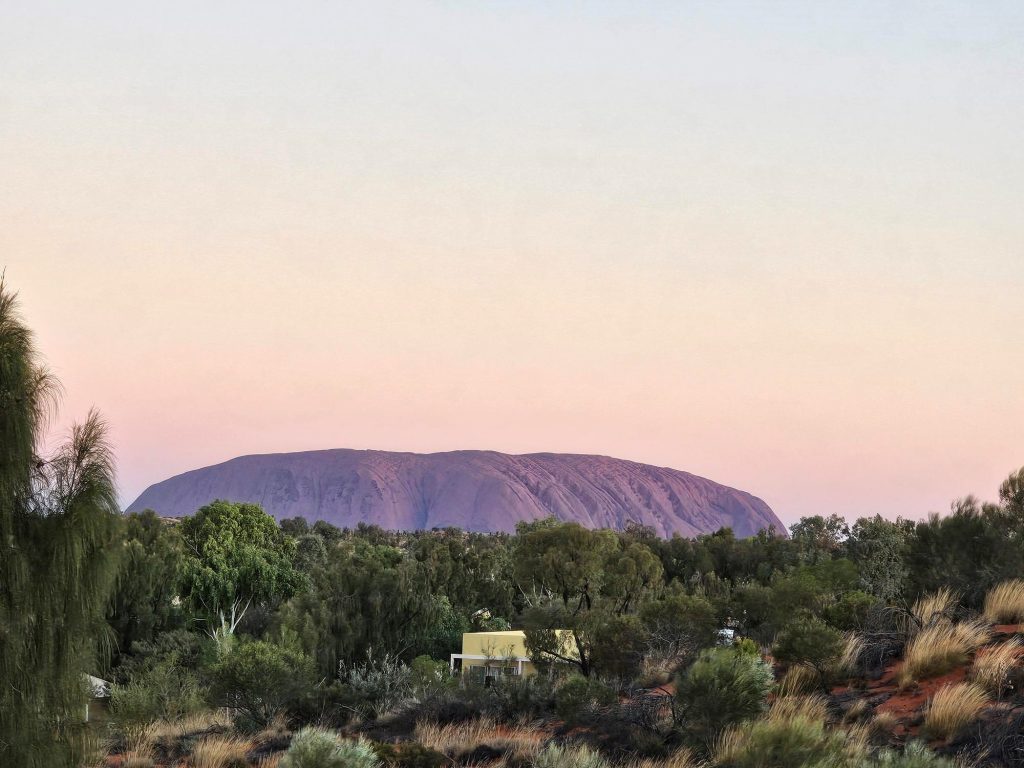
We do the mandatory view at Sunrise, and then head off to the Olgas (Kata-Tjuta) – almost more impressive. We walk to explore what might be termed ‘Olga’s Bike rack’ – a cleft between two colossal, rounded buttocks of rock. I go ‘off-piste’ to explore the cleft in more detail. ‘Which bit of the sign “Do not stray from the path” did you not understand?’, asks James as I rejoin. ‘What sign?’ is the only answer I can muster.

One path we are keen to stay on is to keep raising awareness of the outstanding work the charities we support do. So please help us along that path by sharing the story and the gofundme link with your friends and colleagues so that we can keep giving more people the opportunity to contribute.
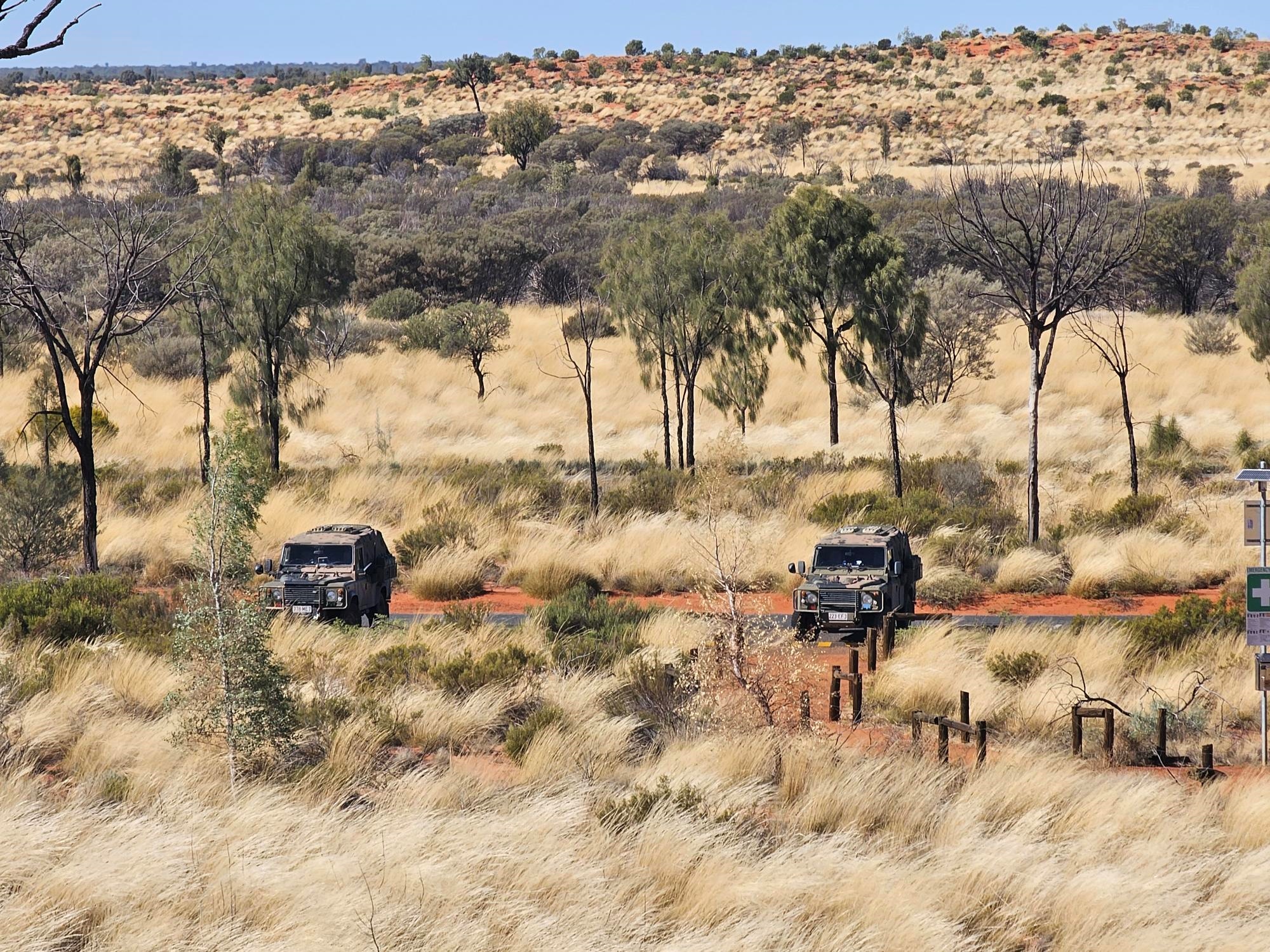
Congatulations to both on the 10km cicumnavigation of Ayre’s Uluru Rock!
I suspect it was much flatter than the Moggill 10km!
Thank you for the photos of the rock. They are marvellous! The geologists will tell you that it is made of a particular type of sandstone. I’m sure it’s actually made of magic and dreams to be so many colours at once…